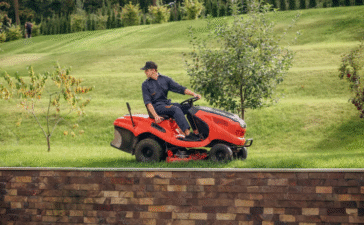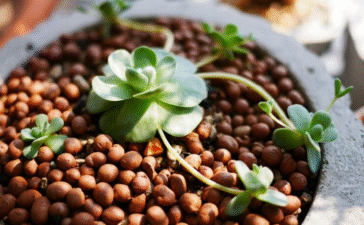July often marks the peak of summer, a time when gardens can either wilt under the heat or burst into a spectacular display of color. For many gardeners, this month is a pivotal moment. The spring flowers have faded, and the long, sunny days present a unique opportunity to cultivate some of the most vibrant blooms of the year. Understanding how to work with the July climate is key to creating a landscape that not only survives but thrives. This guide will walk you through everything you need to know about flowering in July.
We’ll explore why this month provides ideal growing conditions for certain plants and introduce you to the top flowers that reach their peak performance mid-summer. You’ll also find expert tips on plant care, from watering and fertilizing to managing common challenges like heat stress. By the end, you’ll be equipped with the knowledge to make your garden a stunning sanctuary of mid-summer blooms.
Why July is a Great Month for Flowering Plants
July provides a unique set of environmental factors that encourage prolific blooming. The combination of ample sunlight, warm temperatures, and predictable (in some regions) rainfall creates the perfect storm for vigorous plant growth. This is the heart of summer gardening, where the right plants can turn the sun’s intensity into an explosion of color. These ideal bloom conditions help many flowers produce more buds and sustain their floral display for weeks.
Furthermore, mid-summer is when pollinator activity is at its highest. Bees, butterflies, and hummingbirds are out in full force, and planting flowers that bloom in July provides them with a crucial source of nectar. This increased pollination in summer doesn’t just support local ecosystems; it also ensures that your plants produce healthy seeds and fruit, contributing to a more robust and self-sustaining garden. Gardening for pollinators is a rewarding way to create a lively and ecologically balanced outdoor space.
Top 10 Flowers That flowering in July
Choosing the right plants is the first step toward a breathtaking July garden. Here are ten reliable flowers known for their spectacular mid-summer displays.
Zinnias
Zinnias are true sun-loving flowers, producing a profusion of bright, daisy-like blooms in nearly every color imaginable. These annual flowering plants are incredibly easy to grow from seed and will continue to flower until the first frost, especially when you regularly cut them for bouquets.
Petunias
For continuous blooms all summer long, petunias are an unbeatable choice. These flowering annuals for pots and hanging baskets spill over with trumpet-shaped flowers. With countless varieties available, from the classic single-color to striped and ruffled types, they offer endless design possibilities.
Cosmos
With their delicate, feathery foliage and simple, charming flowers, cosmos add a touch of airy elegance to any garden. These easy-to-grow flowers come in shades of pink, white, and magenta and are favorites of bees and butterflies. They often self-seed, returning year after year.
Marigolds
Marigolds are hardy summer flowers, celebrated for their vibrant yellow and orange hues and their ability to repel common garden pests. As drought-tolerant flowers, they are a low-maintenance option that provides reliable color even in hot, dry conditions.
Sunflowers
Nothing says summer quite like a towering sunflower. These iconic flowers are a fantastic summer garden centerpiece. With varieties ranging from dwarf types to giants that can grow over 12 feet tall, there’s a sunflower for every garden size. They are easy to grow and their seeds provide a tasty snack for birds.
Coneflowers (Echinacea)
Coneflowers are cherished for their long-lasting, daisy-like blooms and their ability to attract pollinators. These perennial plants are not only beautiful but are also used in herbal medicine. Coneflower care is minimal once established, as they are drought-tolerant and resilient.
Daylilies
Known for their trumpet-shaped blooms, daylilies are a staple in perennial summer flower gardens. While each individual flower lasts for only one day, a single plant produces so many buds that it remains in bloom for weeks. They are incredibly hardy and come in a vast array of colors and patterns.
Lobelia Cardinalis (Cardinal Flower)
If you want to attract hummingbirds, Lobelia Cardinalis is a must-have. Its striking spikes of brilliant red flowers are a magnet for these tiny birds. This red flowering plant thrives in moist soil and partial shade, making it a great choice for bog gardens or damp spots.
Hardy Hibiscus
For a touch of the tropics, hardy hibiscus delivers enormous, showy blooms that can be as large as dinner plates. Available in shades of pink, red, and white, hardy hibiscus varieties are surprisingly cold-hardy and make a dramatic statement in any mid-summer garden.
Lavender
Beyond its heavenly fragrance, lavender produces beautiful spikes of purple flowers throughout the summer. Lavender care involves providing full sun and well-drained soil. This fragrant garden plant is perfect for borders, herb gardens, or pots.
Expert Tips for Flowering in July
A vibrant garden in July requires more than just the right plants; it needs consistent care tailored to the demands of summer.
Watering Practices
Proper summer watering is crucial. The intense heat can quickly cause water stress. Water your plants deeply but less frequently to encourage deep root growth. It’s best to water in the early morning to minimize evaporation and allow foliage to dry before nightfall, which helps in preventing drought stress and fungal diseases.
Deadheading and Pruning
One of the most effective flower maintenance practices is deadheading, which is the process of removing spent blooms. This encourages plants to direct their energy into producing more flowers instead of seeds. Regular deadheading can significantly extend the blooming period of many annuals and perennials.
Fertilizing in July
Mid-summer is an excellent time to give your flowering plants a nutritional boost. Use a balanced fertilizer for blooming flowers, preferably one lower in nitrogen and higher in phosphorus and potassium, to promote strong flower production. Always follow the package instructions to avoid over-fertilizing.
Mulching Techniques
Applying a layer of organic mulch around your plants is one of the best things you can do for your summer garden. Mulching for flowers helps retain soil moisture, keeps roots cool, and suppresses weeds. A two- to three-inch layer of straw, shredded bark, or compost works wonders for soil temperature control.
Pest Control in Summer Gardens
Warm weather can bring out summer garden insects. Regularly inspect your plants for signs of pests like aphids, spider mites, and Japanese beetles. Opt for natural pest control methods like introducing beneficial insects (ladybugs), using insecticidal soap, or hand-picking pests to protect your flowers without harming pollinators.
Common Challenges When Growing flowering in July
Summer gardening isn’t without its obstacles. Here’s how to handle some common issues.
Heat Stress and How to Manage It
Extreme temperatures can cause plants to wilt, scorch, or drop their buds. Protect your plants by providing afternoon shade, ensuring consistent moisture, and choosing heat-resistant flowers suited to your climate. A layer of mulch is also essential for keeping the soil cool.
Overcoming Flowering Lulls
Some plants naturally take a break from blooming in the intense heat. You can encourage a second wave of flowers by deadheading regularly, providing a mid-summer dose of fertilizer, and ensuring they receive adequate water. This can help in extending flower bloom periods into late summer and early fall.
Also Read: “flowers that bloom in late winter nyt“
Get Ready to Plan and Plant
With these tips and plant recommendations, you’re well on your way to creating a garden that thrives in the July heat. The key is to choose the right plants for your space and provide them with the care they need to handle the rigors of summer.
Don’t stop thinking about the seasons ahead. July is also an excellent time to start planning for autumn. Consider planting seeds for fall-blooming flowers now to ensure your garden remains a place of beauty and color long after summer ends.
Frequently Asked Questions (FAQ)
What flowers can I plant in July for immediate color?
For quick results, purchase and plant nursery-grown annuals like zinnias, petunias, and marigolds. They are already established and will start blooming in your garden almost immediately.
How often should I water my flowers in July?
Watering frequency depends on your soil, climate, and plant type. A general rule is to check the soil every couple of days. If the top inch is dry, it’s time to water deeply. Container plants will need more frequent watering, often daily.
Is it too late to start a flower garden in July?
Not at all! You can plant heat-loving annuals for instant color. It’s also a great time to plant perennials, which will establish their root systems over the summer and be ready to flourish next year.
What are the best low-maintenance flowers for July?
For gardeners seeking easy-care options, marigolds, zinnias, cosmos, and coneflowers are excellent choices. These plants are generally drought-tolerant once established and don’t require much fuss to produce beautiful blooms.
How can I protect my flowers from pests in the summer?
Promote a healthy garden ecosystem by avoiding broad-spectrum pesticides. Encourage natural predators like ladybugs and lacewings. Use targeted treatments like neem oil or insecticidal soap for infestations, and apply them in the evening to avoid harming pollinators.












